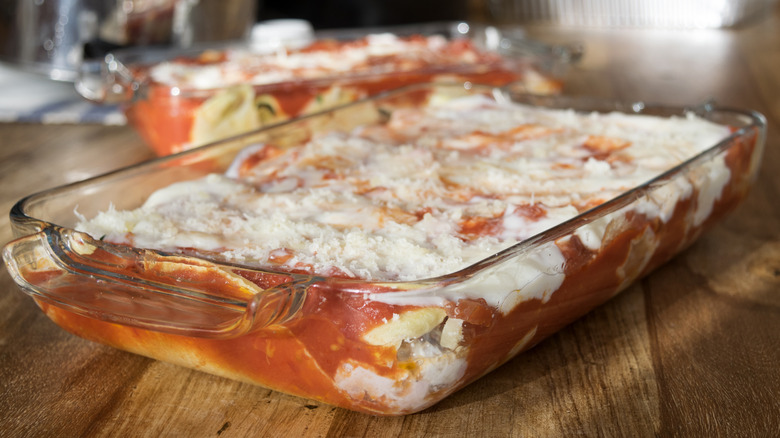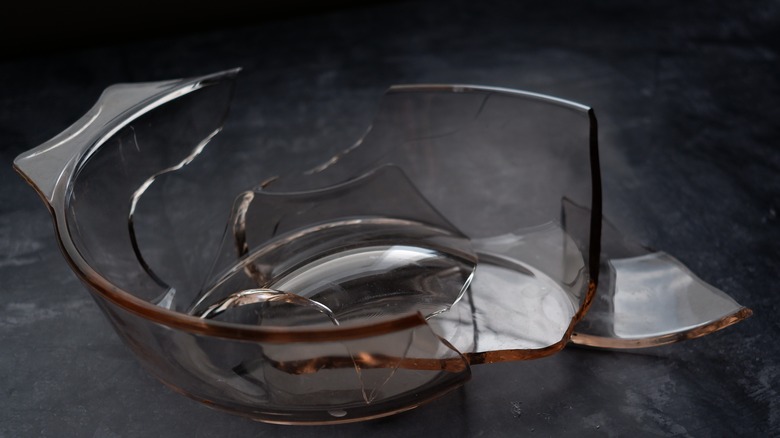You Should Never Put Pyrex Dishes In The Broiler - Here's Why
In 1913, Bessie Littleton, the wife of a Corning scientist, was looking for something superior to her earthenware baking dishes, which had cracked in the oven. She asked her husband, Jesse, to bring home a battery jar made from the company's new Nonex glass, made from borosilicate, a material that could withstand extreme temperatures. Littleton found the glass jar was capable of baking a perfectly browned sponge cake, and her success inspired the company to pursue an entire line of cookware products (via Food & Wine). The initial line of Pyrex, a combination of "pie" and Nonex, included several pie plates and a loaf pan.
Like all things 20th century these days, the Pyrex line of products has inspired an entire community of collectors. Some vintage pieces have fetched prices in the hundreds and even thousands of dollars.
Pyrex dishes, vintage or otherwise, are durable and made to withstand heat, but there is one method of cooking where your Pyrex shouldn't be used.
Keep Pyrex out of your broiler
As a rule, you should not put glass under the broiler — and that includes Pyrex (via Bon Appétit). While Pyrex cookware is great for baking, it's not suited to stand up to the broiler's high direct heat, typically up to 550 degrees Fahrenheit, which can cause the Pyrex to shatter — ruining your meal and creating a huge mess. As Consumer Reports explains, when a Pyrex dish undergoes an extreme temperature change — such as that of the broiler's intense heat — it puts the dish under stress, or "thermal shock." This stress causes different sections of the dish to expand and contract rapidly and inconsistently, which can cause the cookware to break.
According to Bon Appetit, a durable metal pan should be your go-to for broiling. Lining the pan with foil will make cleanup easier and prevent staining. Ideally, you should use a two-tiered broiler tray. Holes in the top of this tray allow grease to drip through and collect on the bottom.
Interestingly, older Pyrex dishes made from borosilicate are better equipped to handle extreme temperature differences, making them more resistant to thermal shock. At some point in the 1950s, Corning started making Pyrex out of less-durable tempered glass, according to The New York Times. The greater integrity of vintage borosilicate Pyrex cookware makes these items even more collectable.

